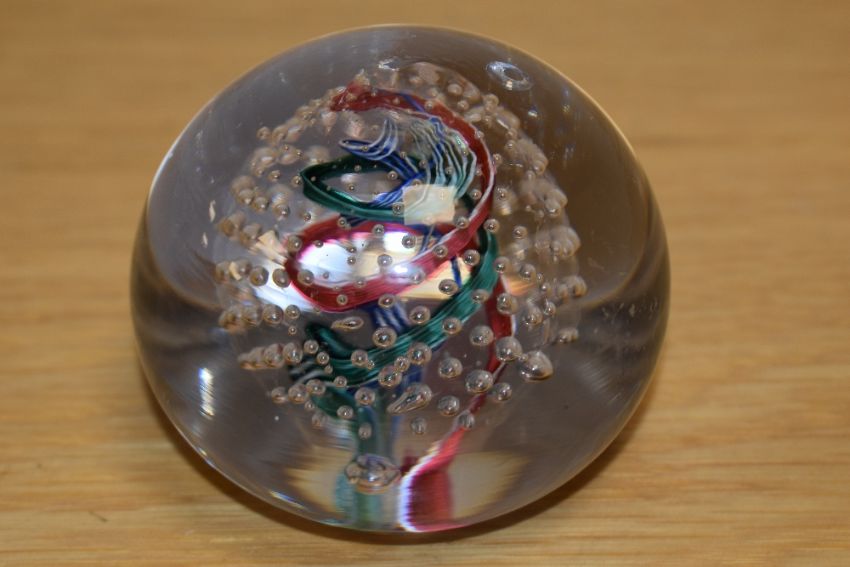In our AV&C 9 auction, we have several examples of Ray Annenberg’s vases, paperweights and bowls produced in the Whitefriars factory.
Ray’s journey from a “spare boy” at Whitefriars factory to one of its most esteemed glassblowers is truly remarkable. His dedication to learning and honing his craft under the tutelage of masters like Frank Hill, Harry Dyer, and Ronnie Wilkinson speaks volumes about his passion for glass artistry.
In 1953, having just turned 16 years of age, Ray Annenberg joined the Whitefriars factory. The following year, in 1954, young Ray’s efforts had not gone unnoticed, and he was promoted to work as “leading boy” for the talented and highly respected Frank Hill.
Frank Hill, widely regarded as one of the best of his time in handmade glass, was most famous for his stunning swans. Ray was hugely inspired by Frank Hill’s work on the swans and described how Frank physically worked the glass as “effortless”.
Ray’s next post at Whitefriars was to become the “leading boy” for Harry Dyer. Harry Dyer was the creator of the very rare and stunning “Early ducks” Whitefriars produced and was a master at injecting personality into solid glass paperweights.
Harry Dyer’s animals evolved from Frank Hill’s swans and were made with less classical lines. They had a more semi-abstract look, set off with beautifully controlled bubbles while still retaining a certain elegance. Ray learned a lot working with Harry Dyer’s new styles and techniques.
Ray was also lucky to have watched the highly regarded Vicente Boffo make his penguins in the early 1960s.
Ray then went on to work under Ronnie Wilkinson. Ronnie Wilkinson had changed Harry Dyer’s duck designs into a more retro statement, with a bolder, more geometric design that was more contemporary and less elegant. It was more abstract and less classical.
Ronnie’s ducks had excellent geometry, better balance and symmetry, and a much more modern look than had previously been seen before. Ray described the variation in Ronnie Wilkinson’s style of working the glass to what he had been used to before as much more aggressive. Preferring brute force to the silky flow of his predecessors.
By this time, Ray was now working on his own initiative and highly regarded in his own right.
By now, Ray had benefitted from the opportunity to work very closely with all three of the very best glass animal paperweight designers produced by Whitefriars Glass (arguably the best of the 20th century) and had soaked up all their experience like a sponge, and he loved it.
With such a stunning resume of mentors behind him, Ray’s own talents flourished, and he went on to become one of the very best glass blowers ever to come out of the Whitefriars glass factory and was promoted to the very highest position of “Gaffer” in 1971, where he would be responsible for blowing the most important designs.
However, the pinnacle of Ray’s work was yet to come in the pieces he designed. These were stunning abstract designs, bold and futuristic, with meticulously perfectly controlled bubbles and bursting with character and personality.
They were highly innovative and quite unlike anything seen before. They were a huge hit, and everybody asked Ray if he would make one for them, too, to which he always obliged, as was his very giving and caring nature.
They were the ultimate design, encompassing everything Ray had learned from each of his illustrious predecessors in over 25 years at the Whitefriars factory.

